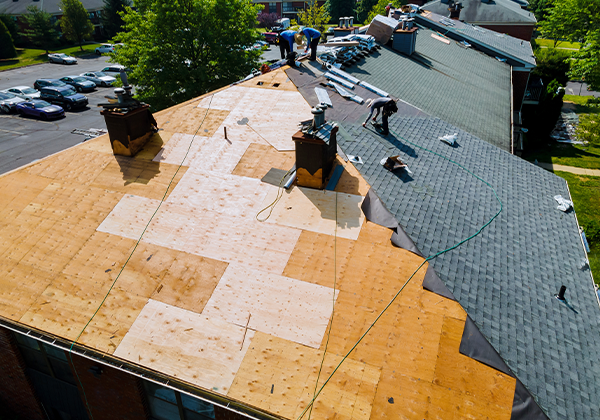What you need to know about getting your home's roof replaced
June 05, 2025
How to set your home, family and roofing contractor up for a successful roof reno
Having your roof replaced is a big job that can be disruptive to your home life, but minimizing those impacts doesn’t have to be complicated.
With some planning – and maybe a little elbow grease – you can streamline the process by preparing your family and your property for the installation.
This will make life easier for you and may even help the contractor complete the work faster.

Hold a pre-construction meeting
Every roof replacement project is different, so before construction even starts, it’s a good idea to meet with your contractor to get an understanding of the full project scope.
Do have your questions lined up before the meeting so you don’t forget anything important? Don’t be afraid to ask about project timelines, who will be on site, how to handle communication, change orders and delays, and what your rights and responsibilities are as the homeowner.
This is an opportunity to make the contactor aware of any stationary outdoor landscaping or infrastructure that may need extra protection as the work is carried out. You can tarp off areas around sprinkler systems and gardens beforehand, or they can keep the zones clear by marking them with flags or tape.
You can also ask the contractor to remove hard-to-reach features, like rooftop satellites and antennas, until the job is done.
Accommodate family and pets
If you have pets or children in the home, you may want to find temporary accommodations for them – and for yourself – during construction.
Roofing projects are loud and, no matter how stringent the safety measures are, job sites can be hazardous during active construction. You don’t have to be on site and, rather than sticking it out, it may make sense to stay with family, friends, or even to book a staycation until project completion.
Protect belongings inside your home
Now to get ready for project commencement.
Protect your indoor possessions from the dust, debris and seismic sensations that come with the thumping and hammering of a roof replacement.
Start by removing objects hanging on the walls that could be knocked down by the vibrations – think artwork, mirrors, even TVs – especially in rooms directly under the roof. If you have an attic, consider sealing it off to simplify future cleanup by keeping dust contained.
Fend off grime on immovable furniture like couches, beds, dining tables, etc., by draping them with dop cloths, sheets or tarps.
Pack up any fragile décor or tchotchkes and place them out of harm’s way, either in a closet or basement. The same goes for valuables – you may want to lock them in a safe or store them in an off-site location until your reno is complete.
Clear your exteriors for roofers
Ideally, roofing constrictors should have, at minimum, a 20-foot radius around your exteriors to work within. They need this space to unload materials and tools, and to place a dumpster for removal of old shingles and other rubble.
This means that you need to move outdoor items like furniture, barbeques, bird baths, and anything else you want to keep safe beyond that perimeter, or into your garage.
You’ll also need to move any cars during active construction, either down the street or to the end of your driveway. Keep in mind roofers have a lot of heavy equipment to work with – it’s courteous to leave room in the driveway for their trucks.
One final tip – if you do decide to stay home during your roof renovation, think about picking up a good set of earplugs.